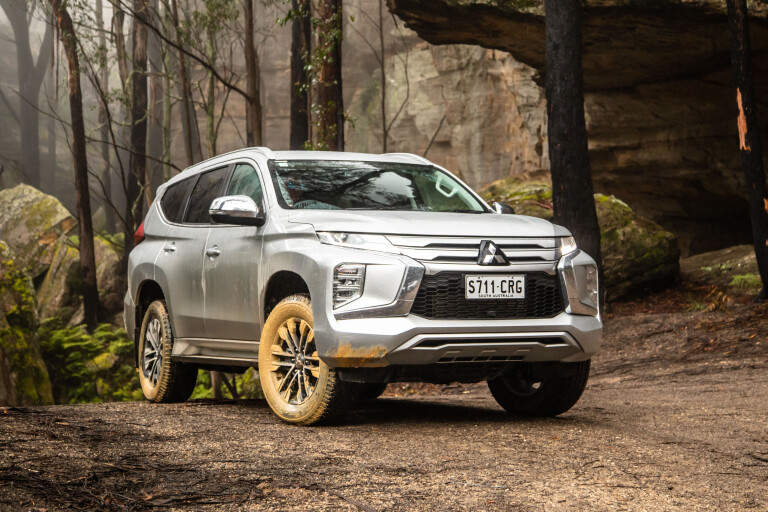
2022 Mitsubishi Pajero Sport GLS Deluxe long-term review
JUMP AHEAD
Part 1: Family friendly
Our family is no stranger to the Mitsubishi Pajero. My partner drove a 2002 model Paj for many years until recently, when the old girl met her maker on Victoria Pass in the Blue Mountains at almost 400,000km. May she rest in pieces.
Back in 2012, Mitsubishi loaned me a Pajero GLS for around 18 months when I was the editor of Camper Trailer Australia magazine. It served as the mag’s official tow-tug and I recall handing the keys back with some reluctance.

One decade, a sea change, two step-kids and a baby later, and I find myself in the driver’s seat of a Pajero long-term test car once more, but not as I know it.
The Pajero Sport is decidedly an SUV, comfortable and safe as a family mover, but with the goods on-board for proper weekend adventure. In short, exactly my type of car.
The spec we're driving here is the Pajero Sport GLS 4x4 7-seater with the 'Deluxe' option pack, which adds leather-appointed seats, powered front seats and a 360-degree camera system.
In this configuration, the price is $55,940 before on-road costs.
So how does it hold up as the daily family ride and weekend adventure machine? I’ll be testing it over the coming months to find out.
I’ve had this Pajero Sport GLS Deluxe 4x4 seven-seater for nearly a month and have driven 1856km, using 216L of fuel. Average fuel consumption is sitting at 8.5L/100km.
The car got a workout off road when Wheels Media journos John Law and Evan Spence tested it against stablemate, the Mitsubishi Outlander in the Blue Mountains, which might account for the increase in consumption against the manufacturer-stated average of 8L/100km.

The GLS Deluxe Option is right in the middle of the range, giving it a few niceties that I appreciate, especially with a toddler on-board.
Safety features like auto-lock doors that kick in after a few seconds of driving, adaptive cruise control, auto-braking forward collision control, and automatic headlights and wipers make life behind the wheel a little easier when the toddler is screaming and you’re trying to shovel ‘Bluey bikkies’ in her mouth.
Leather seats are easy to wipe clean of sticky handprints, and electric front seat adjusters make it easy when I jump in after my 6-foot 3-inch partner has been driving.
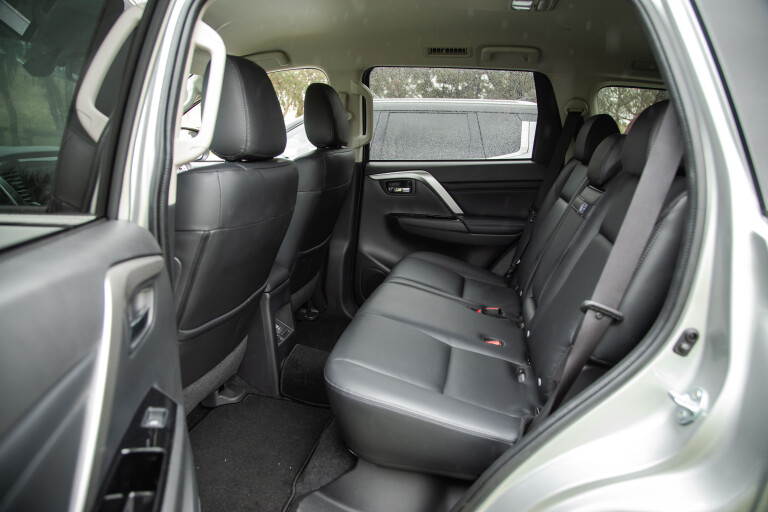
The toddler’s car seat is a breeze to install, thanks to the Isofix anchorage system that allows the seat to clip-in at the base. When my 9- and 11-year-old step-kids are with us, which is half the time, the seating configuration could not be easier.
For everyday driving, we drop one half of the third row of seats so one kid can sit in the far back (a spot they call ‘shotgun’ for), and the other in the second row with the middle space free between them and the toddler.
The seat mechanism on the Pajero Sport is ingenious. The third row of seats is erected simply by yanking a handle from the floor of the boot until the seat clicks in. When stowed, they sit flush against the back of the second row of seats, taking up minimal boot space and leaving a flat surface area for cargo.
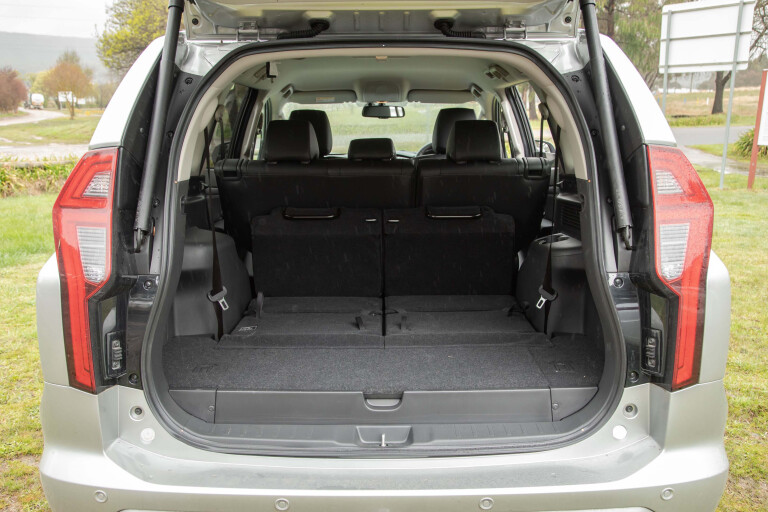
Although boot space is minimal when both the third row seats are up (especially when compared with our Volvo XC90), by erecting only one of the two seats we have ample space for the pram, the school bags, and the groceries.
That third row can be easily stowed to allow for greater luggage capacity, and the boot can eat up to 502 litres of luggage when the third row is folded down. Folding all of the seats opens up 1488 litres and ample space: 1575mm (L) x 1370mm (W) x 885mm (H).
Of course, all three kids can sit along the second row of seats, as they did when we went on holiday to the Central Coast for the weekend and needed the full boot space for our gear.
Even with the bulky infant seat, the bigger kids still had adequate space and plenty of leg room. They enjoyed being able to operate their own air vents via a roof-mounted control panel and the two USB outlets meant there was no jostling for power when the iPad batteries waned.
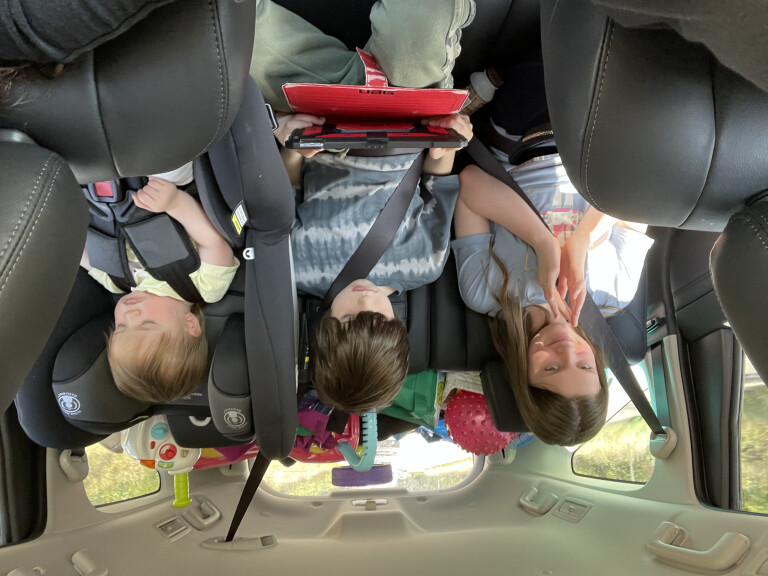
We’ve had the car for three weeks now and thanks to our old pal La Niña, haven’t taken it off road or camping yet. When we do, we’ll need to consider how best to load all our camping gear and ourselves into what is a fairly compact vehicle. More on that next time.
Total kilometres: 5600km
Date acquired: October 2022
Kilometres this month: 1856km
Average fuel use: 8.6L/100km
Part 2: Family weekender
Over the past few weeks, our long-term Pajero Sport GLS has continued to serve dutifully as the family steed, carting the wee one to day care and the bigguns to school, swimming lessons, the beach, and the shops.
We even managed to find a moment when the diary and the weather conspired positively to allow us to sniff out some local tracks.
On road, the Pajero Sport is a comfortable but no-nonsense family mover, a little sluggish perhaps but with a prevailing feeling of security for its precious inhabitants. Off road, however, it feels decidedly more, well, sporty.

We poked around some tracks out the back of Picton near the Southern Highlands and had a great time. The Pajero is nimble and fun to drive off road, with the traction-control system providing more than adequate performance for the task at hand.
The front cameras came into their own when we straddled high ground in a particularly washed-out spot, and helped to avoid snagging the front bumper on rocks and other traps.
Front-end ground clearance could be better on the Pajero Sport, so being able to quickly flick to a front camera view is a handy tool for the driver while crawling in low range. The front, however, is protected by factory-fitted bash plates.
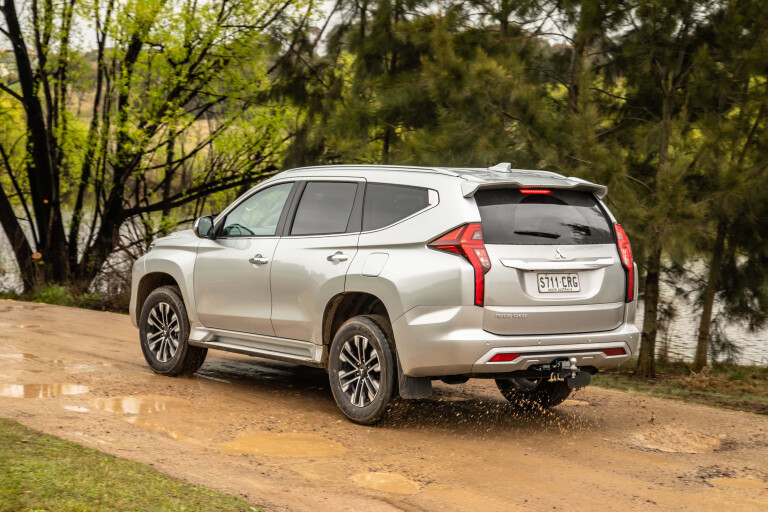
The inclusion of a rear differential lock enhances the vehicle’s off-road performance, while a solid rear axle and coil springs made for a comfortable travelling experience as the vehicle trundled along bush tracks.
Back on the tarmac, the Pajero Sport is right at home as an everyday family mover. Last month, I mentioned how much I like the third-row seat set-up (quick, easy, folds flat), and this continues to serve us well as we lug various configurations of kids and kids’ friends around the traps.
I would, however, prefer if the second row of seats was adjustable, because getting the toddler into her car seat would be a lot easier for me if I could slide the seat backwards. Presently, I have to lift her up, forward and around the bulk of the child seat, which is a bit tricky, particularly given I’m recovering from shoulder surgery. My much taller and stronger partner, on the other hand, has no trouble with this.
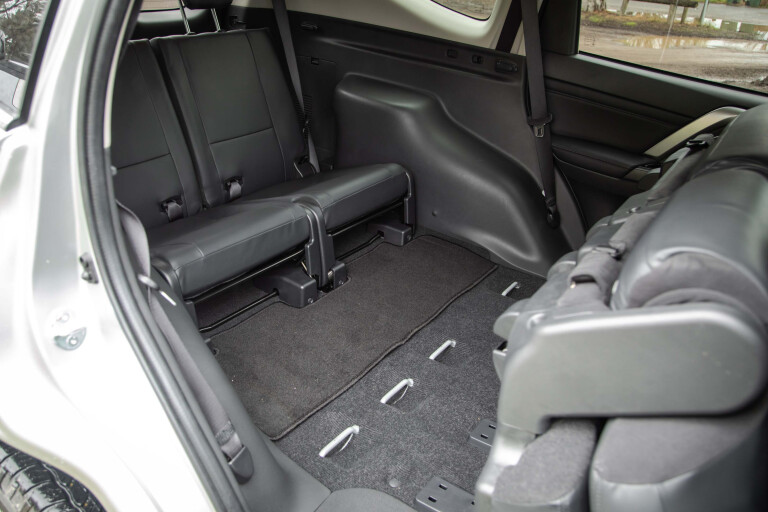
Miss 18-Months has decreed her favourite feature of the Pajero Sport to be the electric rear door, and gets most upset if button pushing duties are not left in her tiny, capable hands. For me, the jury is out. I have found the electric rear door to be temperamental, occasionally refusing to close, while chiming an alert alarm despite nothing being in the way.
A few times I’ve been left more baffled that your gaslit ex, with a door that simply refuses to close. Manual closing of the door is clearly not part of its intended design (it feels sticky and forced), but personally I’d rather have the option.
"The Pajero Sport is is a hard-working, utilitarian vehicle that doesn’t pretend to be something it’s not"
Sticking with electronics, my partner and I both lament the lack of memory function on the driver’s seat. Our preferred driving positions vary considerably because of the aforementioned size difference between us. Because we are both regularly driving the vehicle, we’re constantly trying to find the sweet spot. Our Volvo XC90 remembers driver seat and wing mirror positioning, so having to manually adjust each time feels a little rudimentary.
That said, after another month of use as a family all-rounder, my predominant sense of the Pajero Sport is that it’s a hard-working, utilitarian vehicle that doesn’t pretend to be something it’s not.
Total kilometres: 7911km
Kilometres this month: 4167km
Average fuel use: 9.05L/100km
Pajero Sport (Exceed) v Toyota Fortuner
2022 Mitsubishi Pajero Sport GLS Deluxe specs
| Engine | 2.4L I4 turbo-diesel |
|---|---|
| Capacity | 2442cc |
| Transmission | 8-speed automatic |
| Power | 133kW @ 3500 |
| Torque | 430Nm @ 2500 |
| 4x4 system | Part-time 4x4 |
| Front suspension | Double wishbone with coils |
| Rear suspension | 3-link with coils |
| Wheels | 18-inch alloys |
| Kerb weight | 2060kg |
| GVM | 2775kg |
| Payload | 715kg |
| Towing capacity | 3100kg |
| Seating | 7 |
| Fuel tank | 68 |
| ADR fuel claim | 8.0L/100km |
| Wading depth | 700mm |
| Approach angle | 30 |
| Departure angle | 24.2 |
| Rampover angle | 23.1 |
| Ground Clearance | 218mm |
| Price | $55,940 before on-road costs |

COMMENTS